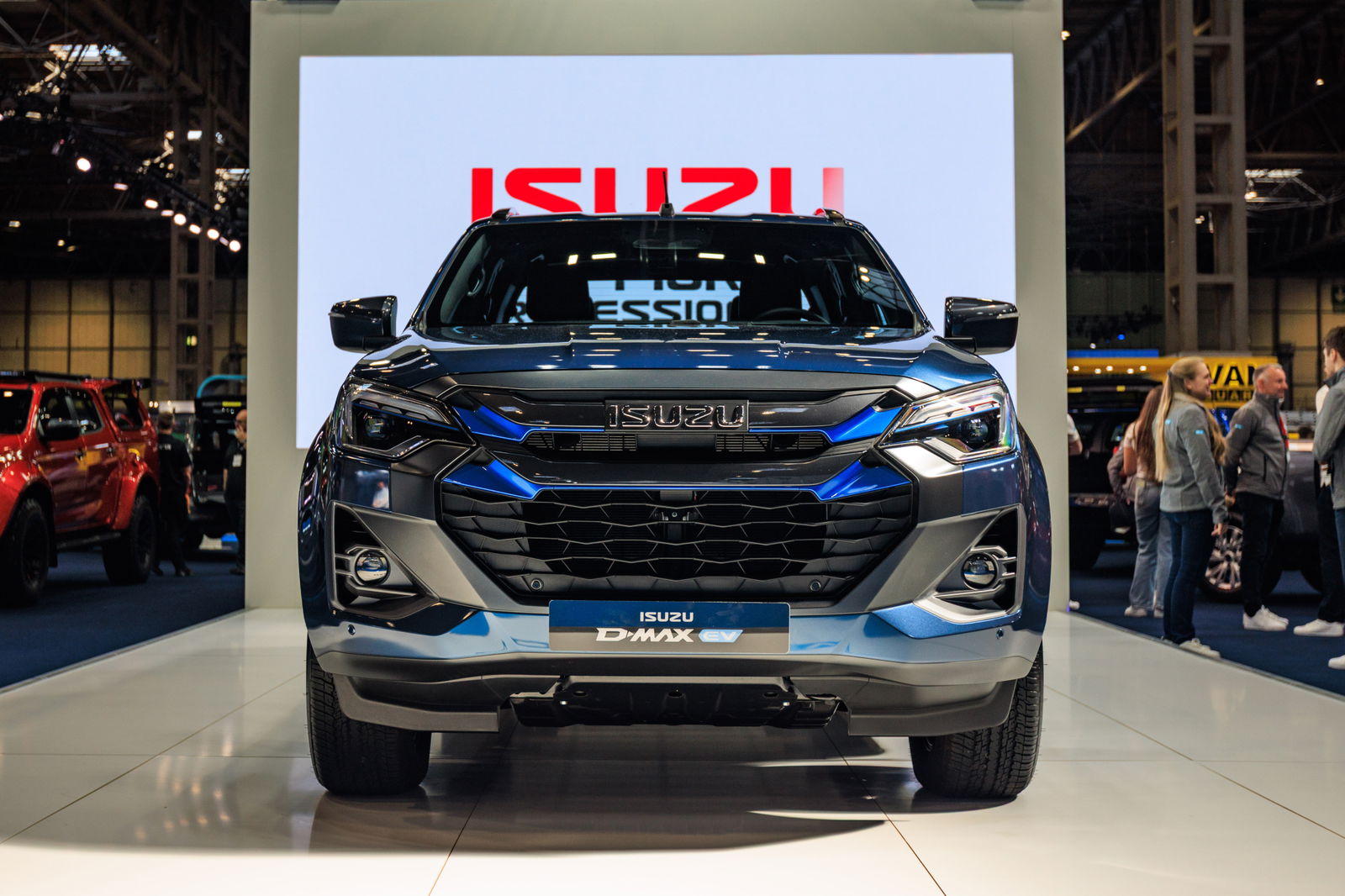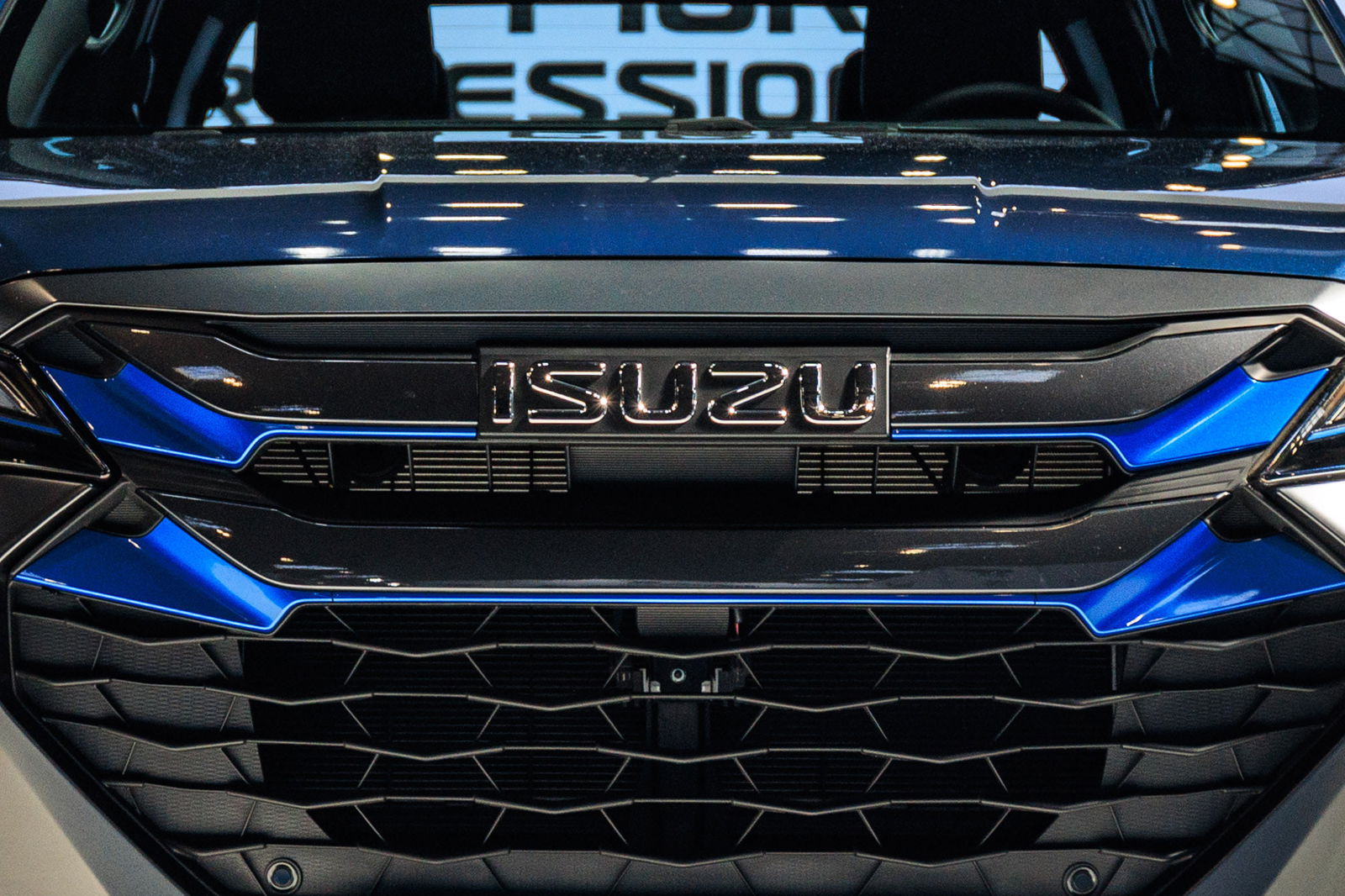Isuzu has finally revealed pricing for its new D-Max EV, an electric version of the Japanese brand’s popular ute – and it’s far from cheap.
Ahead of going on sale in the UK later this year and deliveries beginning in February 2026, Isuzu has priced its three D-Max EV variants: the extended- and dual-cab eDL40, and the flagship dual-cab eV-Cross.
For the least expensive D-Max EV, prices start from £59,995 drive-away as a commercial vehicle (but excluding VAT, a 20 per cent tax) in extended-cab eDL40 guise – equivalent to $123,865 before taxes. With VAT, this rises to £71,994 ($148,640).
Stepping up to the dual-cab eDL40 means a price tag of £60,995 ($125,930) excluding VAT, or £73,194 ($151,115) with VAT. For context, the equivalent 1.9-litre turbo-diesel D-Max DL40 costs £38,300 ($79,075) excluding VAT, or £39,400 drive-away ($81,345).
At the top of the range stands the D-Max eV-Cross, starting from £62,495 ($129,025) excluding VAT, or £74,994 ($154,830) with taxes added. The turbo-diesel V-Cross flagship is priced from £39,800 ($82,170) excluding VAT, and £40,900 ($84,440) on the road.

It’s a different story in Australia, where the D-Max’s core variants are powered by a 3.0-litre turbo-diesel engine, with equivalent grades starting from $55,800 plus on-road costs (LS-M) and topping out at $70,500 before on-roads for the X-Terrain.
While Isuzu Ute Australia has previously said the electric ute will come here, it hasn’t released a specific timeline on when.
Powering the D-Max EV are a pair of dual electric motors, with one unit on the front and rear axles respectively. The front motor produces 43kW and the rear develops 97kW, totalling 140kW combined.
While this is identical to the famed ‘4J’ 3.0-litre four-cylinder turbo-diesel engine found under the bonnet of most D-Maxes sold in Australia, the EV only produces 325Nm of torque – down a significant 125Nm on the oiler.

Isuzu claims it can sprint (if that’s the right word) from 0-100km/h in 10.1 seconds, and exceed 130km/h.
A relatively small 66.9kWh battery pack means the D-Max EV has a claimed driving range of 263km on the WLTP cycle, crucially while it’s unladen.
The D-Max EV can be charged at up to 11kW with an AC charger and 50kW on a DC fast-charger, which Isuzu says can take it from 20 to 80 per cent charge in one hour.
Those performance and range figures are dwarfed by upcoming rivals such as the LDV eTerron 9, which has been approved for Australia in both rear-wheel drive, 200kW guise and all-wheel drive 325kW trims.
In LDV’s flagship, it can go from 0-100km/h in 5.8 seconds, while a 88.5kWh lithium-ion battery unlocks 330km of driving range.

Isuzu claims the D-Max EV has a payload capacity of 1000kg and a braked towing capacity of 3500kg, both of which are on par with the turbo-diesel.
However it tips the scales at 2350kg, up 200kg from a fully-loaded turbo-diesel X-Terrain. Off-road capability hasn’t taken too big of a hit, with ground clearance dropped to 210mm (down from 240mm) while wading depth is now 600mm (down from 800mm).
eDL40 versions get an 8.0-inch infotainment touchscreen, 7.0-inch digital instrument cluster, heated front seats, dual-zone climate control, leather upholstery, six speakers, bi-LED headlights and both front and rear parking sensors.

Those who opt for the eV-Cross gain dark grey exterior styling, a 9.0-inch infotainment touchscreen, auto-dimming rearview mirror, and eight speakers.
All examples have four levels of regenerative braking and an Eco driving mode.
The upcoming implementation of penalties under the New Vehicle Efficiency Standard (NVES) and Isuzu’s existing lineup of two turbo-diesel models means the brand will likely be keen to get the EV ute here sooner rather than later.













Discussion about this post